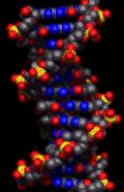Why is Life Carbon-Based?

It is known that hydrogen and helium comprise about 98 percent of the total mass of the Universe, and that oxygen, carbon, nitrogen, neon, iron, silicon, magnesium and sulfur are the most common (about 98 percent) of the heavy elements. He and Ne are noble gases and therefore are inert to chemical reactions. H, O, C, N, Fe, Si, Mg and S, out of these elements, only C and Si can form long chains and thus have the ability to produce the complicated molecules required by life as we know it. The C-C bonds, however, are twice as strong as the Si-Si bonds, and therefore carbon chains are consistently more stable. The chemistry of C is more flexible than that of Si. Carbon Dioxide is a gas that dissolves easily in water and the Si chemistry comes to an end. Also Silane (SiH4) is very unstable, and in the presence of water vapor decomposes into SiO2. This explains why in the atmosphere of Jupiter, where H is the dominant element, we have detected H2O, CH4, NH3, PH3, but no SiH4. Even on the surface of the Earth, where Si is approximately 600 times more abundant than C, life still chose a carbon-base rather than a silicon-base. Water is a polar molecule, which makes it an excellent solvent and therefore an ideal medium for chemistry. Ammonia (NH3) liquefies at much lower temperatures where chemical reactions become slow and therefore inappropriate for life. Also, it cannot co-exist with free oxygen, while water and oxygen co-exist very nicely.
Mark Elowitz



